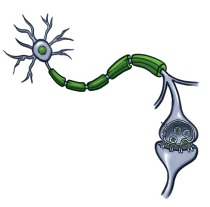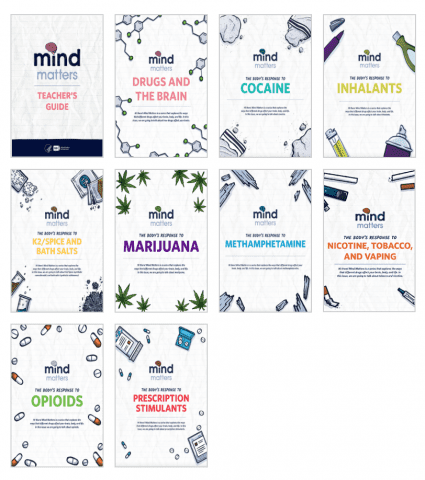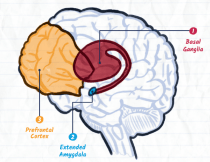As young people navigate a world full of drugs and substances, drug education lesson plans play a crucial role in providing reliable health information for students. We break down the importance of drug education, highlight drug education curriculum from the National Institute of Drug Abuse (NIDA), and talk about how schools can incorporate activities into physical education and health classes.
Importance of Drug Education Lesson Plans
Drug education lesson plans attempt to educate and combat substance use among young people. Recent data from a “Monitoring The Future Survey” demonstrates the current prevalence of drug and substance abuse by students.
Key Statistics From This Survey Include:
Vaping – 12% of eighth graders, 20.5% of 10th graders, and 27.3% of 12th graders reporting vaping nicotine in the past year.
Cannabis use – with 8.3% of eighth graders, 19.5% of 10th graders, and 30.7% of 12th graders reporting cannabis use in the past year.
Alcohol – 15.2% of eight graders, 31.3% of 10th graders, and 51.99% of 12th graders reporting alcohol use in the past year.
Ilicit Drug Use (Drug types other than marijuana) – 4.9% of eight graders, 5.7% of 10 graders, and 8.0% of 12th graders reporting use of cocaine, heroin, amphetamines, and nonmedical use of prescription drugs.
So while NIDA’s report suggests overall substance use is down, the overall numbers are still alarming. Drug use and substance abuse can have profound impacts on young people’s brains and bodies. In addition, the short and long term affects of substance abuse can alter our brain chemistry, lead to addiction, and have incredible consequences.
Drug Education Lesson Plans From NIDA
The National Institute of Drug Abuse (NIDA) has developed a program that invites students to take a scientific journey to learn about the body and brain’s complex responses to specific drugs and substances.
In these drug education lesson plans, students explore the facts and science behind drugs and substances, with a breakdown of the short and long-term affects that they have.
All of this program’s written materials, videos, and PDFs are from the Mind Matters Series created by The National Institute of Drug Abuse (NIDA). All lessons are based on national science and education standards and were developed by scientists from leading universities and the National Institute on Drug Abuse.
Lesson Topics Include:
- Drugs & The Brain
- Marijuana
- Nicotine, Tobacco, & Vaping
- Inhalants
- Opioids
- Methamphetamine
- K2/Spice & Bath Salts
- Cocaine
- Prescription Stimulants
Source: National Institute on Drug Abuse; National Institutes of Health; U.S. Department of Health and Human Services.
Sample Lesson Plan - Drugs & The Brain
The human brain is a very complicated organ.
Your brain weighs three pounds and controls everything you do. You need your brain to see, hear, smell, taste, and feel. Your brain is you—everything you think and feel and who you are.

How does the brain work?
Our body has special cells called neurons that carry messages back and forth between the brain and other parts of the body. The neurons send messages to each other by releasing chemical substances called neurotransmitters into the gaps between cells. These gaps are called synapses.
The neurotransmitter crosses the synapse and attaches to a receptor on another reuron, like a key fits into a lock. This is how neurons talk to each other to make your brain and body do things. For example, when you want to walk up a flight of stairs, your brain sends a message to your feet to move, using long chains of neurons.
How do drugs work in the brain?
Drugs change the way that neurons talk to each other. These changes cause neurons to make you act in ways that you normally wouldn’t.
There are three main parts of the brain that are affected by drug use:
- The basal ganglia is the part of the brain that motivates us to do healthy activities, like eating or hanging out with friends. Drugs flow into this area of the brain and cause people to feel really happy. But if you use a drug a lot, the basal ganglia can get used to having the drug around, and make it hard to feel pleasure from anything but the drug.
- The extended amygdala is what makes you feel stressed out or cranky. When people use drugs, this part of the brain gets very sensitive. When your body is used to the drugs and you stop, the extended amygdala makes you feel really sick, so people will use drugs again just to get rid of that feeling.
- The prefrontal cortex helps you think, make decisions, and control your actions. So when someone uses drugs, this part of the brain becomes less able to make good judgements or step in to say “no” to a harmful impulse.
Also, some drugs affect other parts of the brain, like the brain stem. The brain stem controls heart rate and breathing. When a person takes certain drugs like opioids, their breathing can become dangerously slow. When the breathing stops, its called an overdose, and can cause death.
Why do people keep taking drugs when they know they’re bad for you?
Drugs change the brain in ways that make quitting hard, even when you want to. This is because when you take drugs, the neurotransmitter dopamine is released in the basal ganglia in large amounts. Dopamine signals in this brain area “teach” other parts of your brain to keep seeking out the drug so you can take it again and again.
When people can’t stop using drugs even though they want to, and drug use is causing serious consequences, it is called addiction. Their brain has learned to crave the drug all the time.
What are the long-term effects of drug use?
Drug use can lead to serious changes in the brain that affect how a person thinks and acts. It can also cause other medical problems, even death. Some drugs can cause heart disease, cancer, lung problems, and mental health conditions, like depression. A few drugs can even kill cells in your brain and body and make it hard to walk and talk and understand what’s happening around you.
What if someone I know needs help?
If you think a friend or family member has a problem with drugs, talk to an adult you trust – like a parent, coach, or teacher – right away. Remember, treatment is available and people can get better.
Incorporating Lesson Plans on Drug Education
Schools play an important role in providing information on drug prevention for students. But when is the right time and place to talk about impact of drugs and associated health risks with students?
NIDA’s suggests that these resources are used in grades 5-9. Schools might vary when they plan to cover drug education lesson plans, but the goal is to do this at middle school or early high school level before the increasing demands of peer-pressure start to arise.
School administrators should see drug education lesson plans as a proactive approach to providing teens with resources and reliable health information. In many cases, the best place for drug education curriculum is physical education and health classes. As students navigate healthy ways to live, they can also explore the impact and consequences of drug and substance abuse.
The Mind Matters drug education lesson plans are completely free and can be accessed here by teachers and students. And now, teachers and students can also access these lessons directly within the PLT4M app, where other physical education and health topics and units are also hosted. PLT4M helps to create a one-stop shop with technology in physical education and health curriculum.

Key Takeaways on Drug Education Lesson Plans
There are a lot of different options to choose from when discussing and exploring drugs with teens. And while some models take a “scared-straight approach,” NIDA’s Mind Matter series provides a scientific fact focused angle that allows students to learn about the impacts and consequences of drug and substance use and abuse.
Now more than ever, physical education and health needs to help students navigate the real-world, and incorporating NIDA’s drug education lesson plans is a nice addition to schools curriculum.
FAQ
Does PLT4M have other health related units?
Yes, beyond our personal hygiene lesson plans, PLT4M also offers health related units on things like:
Does PLT4M have other types of non-health related units?
Yes, PLT4M has a full slate of physical activity units and PE lesson plans. Check out some of the other options below:











